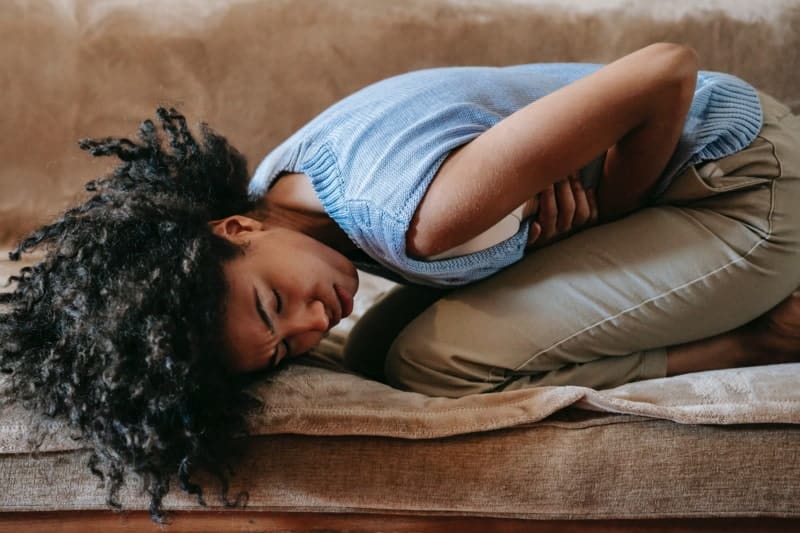What is chronic pelvic pain?
This refers to pain in the pelvis that lasts for 6 months or longer. In many cases there is no single cause for chronic pelvic pain, and the goal is pain management and improving one’s quality of life.
What are the symptoms of chronic pelvic pain?
Symptoms vary vastly depending on the woman. They include:
- Pain that is present all the time
- Pain that comes and goes
- Dull achy feeling
- Sharp pains
- Pelvic heaviness
- Painful sex
- Bladder pain, or pain on urinating
- Pain on sitting or standing for long periods of time
You should see a gynaecologist if you find that your pain is worsening and/or interferes with your daily life.
What are the causes of chronic pelvic pain?
This is usually a complex entity – sometimes pain can be from several conditions at once. Some causes include:
- Endometriosis
Tissue from the womb lining is found outside the womb, most commonly in the pelvis, where it can affect the ovaries, fallopian tubes and intestines. These tissues respond to hormonal changes and bleed during periods, causing pain, inflammation, scarring.
- Bladder pain syndrome
This is a condition of bladder discomfort or pain associated with urinary symptoms which can manifest in chronic pelvic pain.
- Pelvic inflammatory disease (PID)
This is a condition where there is inflammation of a woman’s uterus, fallopian tubes and ovaries, usually caused by an infection that spreads upwards from the vagina and cervix. Partially treated or chronic/recurrent PID can result in chronic pelvic pain due to scarring.
- Musculoskeletal
Conditions affecting the bones, joints, ligaments and muscles that make up the pelvis e.g. degeneration or inflammation may lead to chronic pelvic pain. Vulvodynia, which refers to chronic pain in the vulva, can also be a cause.
- Ovarian remnant
This occurs in women with history of surgery to remove their uterus and ovaries, whereby a small piece of ovary may be inadvertently left inside and cause painful symptoms.
- Uterine fibroids
These are non-cancerous growths that come from the muscle layer of the uterus (womb), and can cause painful periods which occasionally stretch into chronic pelvic pain. They frequently co-exist with endometriosis and adenomyosis.
- Adenomyosis
This is a condition where the tissue from the womb lining grows into the muscle wall of the uterus. This tissue respond to hormonal changes and continue to bleed (inside the uterine wall) during periods, causing painful periods which occasionally stretch into chronic pelvic pain. They frequently co-exist with endometriosis and uterine fibroids.
- Irritable bowel syndrome
Symptoms like chronic constipation, diarrhea and abdominal bloating can cause chronic pelvic pain.
- Pelvic congestion syndrome
This is where there are enlarged, dilated pelvic vessels around your uterus and ovaries. This is a common finding on scans and although most women with this do not experience any pain, in some women this may be attributed as the cause of their chronic pelvic pain.
- Psychological
Sometimes, depression, stress, being affected by other medical conditions or a history of physical or sexual abuse can result in chronic pelvic pain.
What tests do I need?
Your gynaecologist will take a detailed medical history and perform a pelvic examination to check for a possible cause for your pain.
Depending on your symptoms, you may require an ultrasound to check your uterus and ovaries, vaginal swabs to rule out sexually transmitted infections (STIs), urine tests to look for urinary tract infections, and/or bladder scan (to check the amount of urine remaining in your bladder after you have passed urine).
What is the treatment for chronic pelvic pain?
This depends on the cause. Finding a cause can be a long process and in some cases, a clear cause may not be found. Although there may not be a single cure available, communicating openly with your gynaecologist, pain specialist, family members and friends will enable you to find many good ways to keep your symptoms under control so that your life does not revolve around your pelvic pain.
Some treatment options include:
- Diet
Keeping a food diary is important to find out foods that trigger your symptoms. You may need to eliminate the foods that you suspect may be worsening your pain from your diet and try them one at a time to see which one triggers your symptoms. Smoking may worsen symptoms so try to quit smoking.
- Stress management
Relaxation techniques, meditation, acupuncture, music, regular exercise can help relieve symptoms.
- Painkillers
Simple painkillers like panadol and non-steroidal anti-inflammatory drugs (ponstan, synflex, ibuprofen) can help manage pain as needed. Long-term chronic pain may need referral to a pain specialist.
- Physical therapy
Stretching, massage and working with a specialised physiotherapist can help you identify specific points that trigger pain and develop coping strategies. One option for vulvodynia is trigger point therapy, where pressure is applied on trigger points for release. Another option is biofeedback or transcutaneous electrical nerve stimulation (TENS). In severe cases, numbing injections can be given by a pain specialist/anaesthetist.
- Hormone medications
This can be useful if the symptoms of chronic pelvic pain are related to the menstrual cycle as it can help to suppress ovulation and periods to get relief from pain symptoms.
- Anti-depressants, psychological counselling
These can be very useful for women suffering from chronic pelvic pain as this long-term condition can be debilitating and affect one’s self-esteem and quality of life.
Read more on the treatment for endometriosis, bladder pain syndrome, pelvic inflammatory disease, uterine fibroids and adenomyosis.
Remember that chronic pelvic pain is a chronic, long-term condition. Although there is no single cure available, there are many good ways to keep your symptoms under control so that your life does not revolve around your pain.
